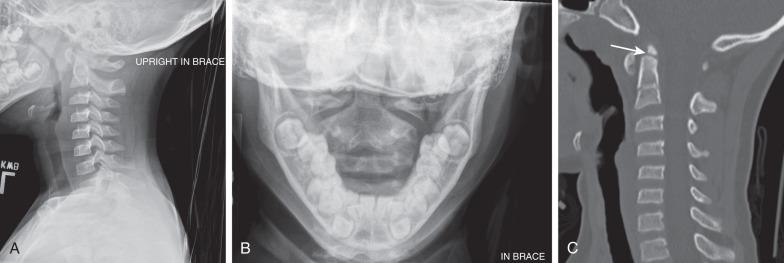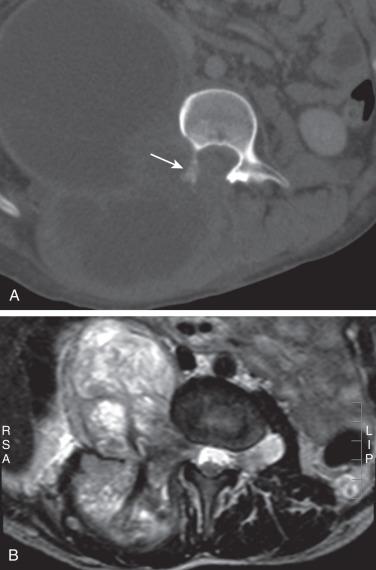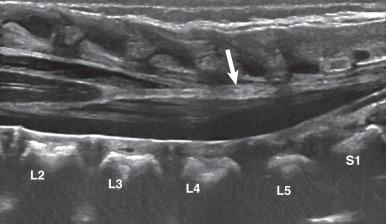Physical Address
304 North Cardinal St.
Dorchester Center, MA 02124
Pediatric spinal cord imaging relies heavily on ultrasound (US) in infants under 6 months of age and magnetic resonance imaging (MRI) thereafter. Other imaging modalities, such as radiography, computed tomography (CT), and nuclear scintigraphy, have a limited role but may provide useful information in cases with specific questions.
Plain radiographic spine series include frontal and lateral radiographs of the cervical, thoracic, or lumbar region. Oblique or odontoid views may be added depending on the clinical indication. Although they have limited ability to evaluate the spinal cord, radiographs are used to screen the pediatric spine and determine the most appropriate next study, particularly in acute trauma. The PECARN (Pediatric Emergency Care Applied Research Network) study has identified eight variables that are highly associated with cervical spine injury (CSI). These data provide evidence-based risk stratification for pediatric CSI and help determine appropriate imaging after blunt trauma.
Contrast radiography includes conventional angiography and myelography. As with plain radiography, contrast radiography has a limited role in pediatric spinal cord evaluation. Myelography, with or without CT, is used rarely to assess the spinal cord and thecal sac in situations where MRI is contraindicated. Similarly, conventional angiography in spinal imaging is limited to diagnostic and therapeutic evaluation of dural fistulas and arteriovenous malformations, both of which are rare in children.
CT plays a role in pediatric spinal imaging with the added risk of radiation. Multiplanar reconstructions provide superior sensitivity and specificity in delineating bony abnormalities compared with radiography and is complementary to MRI for spinal cord evaluation ( Figs. 41.1 and 41.2 ).


CT protocols must be optimized in children to limit radiation exposure. Examinations should be single phase, tailored to the specific indication, size of the patient, and region of interest. CT spine technique typically includes high-resolution 3-mm images obtained axially. Images are reformatted to submillimeter axial, sagittal, and coronal planes. Three-dimensional images may also be obtained if desired. Intravenous and, rarely, intrathecal contrast may be added for specific indications.
US is used for evaluation of the neonatal spinal canal and its contents. Incompletely ossified spinal arches serve as excellent acoustic windows in infants; however, progressive ossification diminishes the window, limiting visualization of the spinal cord. Because of this, US may not adequately demonstrate the spinal contents in infants over 6 months of age.
Spinal US is performed with a high-frequency 7- to 12-MHz linear-array or 8- to 10-MHz curved-array transducer. Imaging is performed with the infant prone in the longitudinal (sagittal) and transverse (axial) planes from the craniocervical junction to the coccyx ( Fig. 41.3 ). Paramedian scanning is useful in older infants with smaller acoustic windows. Vertebral body level is determined in multiple ways, often using an extended (panoramic) field of view to identify the lumbosacral junction and lowermost rib to confirm levels. In cases when the level of the conus cannot be definitively assessed, correlation with radiographs is helpful. A radiopaque marker can be placed on the skin overlying the conus to correlate with the US level on spine radiographs. Real-time cine loops are obtained routinely to demonstrate the normal undulating cauda equina nerve roots during the cardiac cycle. M-mode US can also be helpful in documenting motion of the cord and nerve roots.

Common indications for spine US include screening lumbosacral anomalies associated with low conus position (tethered cord), evaluation of atypical sacral dimples located greater than 2.5 cm above the anus, deep dimples in which the base cannot be visualized, and dimples with cutaneous stigmata. Other indications include guidance for lumbar puncture and assessment of cause after failed lumbar puncture.
Become a Clinical Tree membership for Full access and enjoy Unlimited articles
If you are a member. Log in here